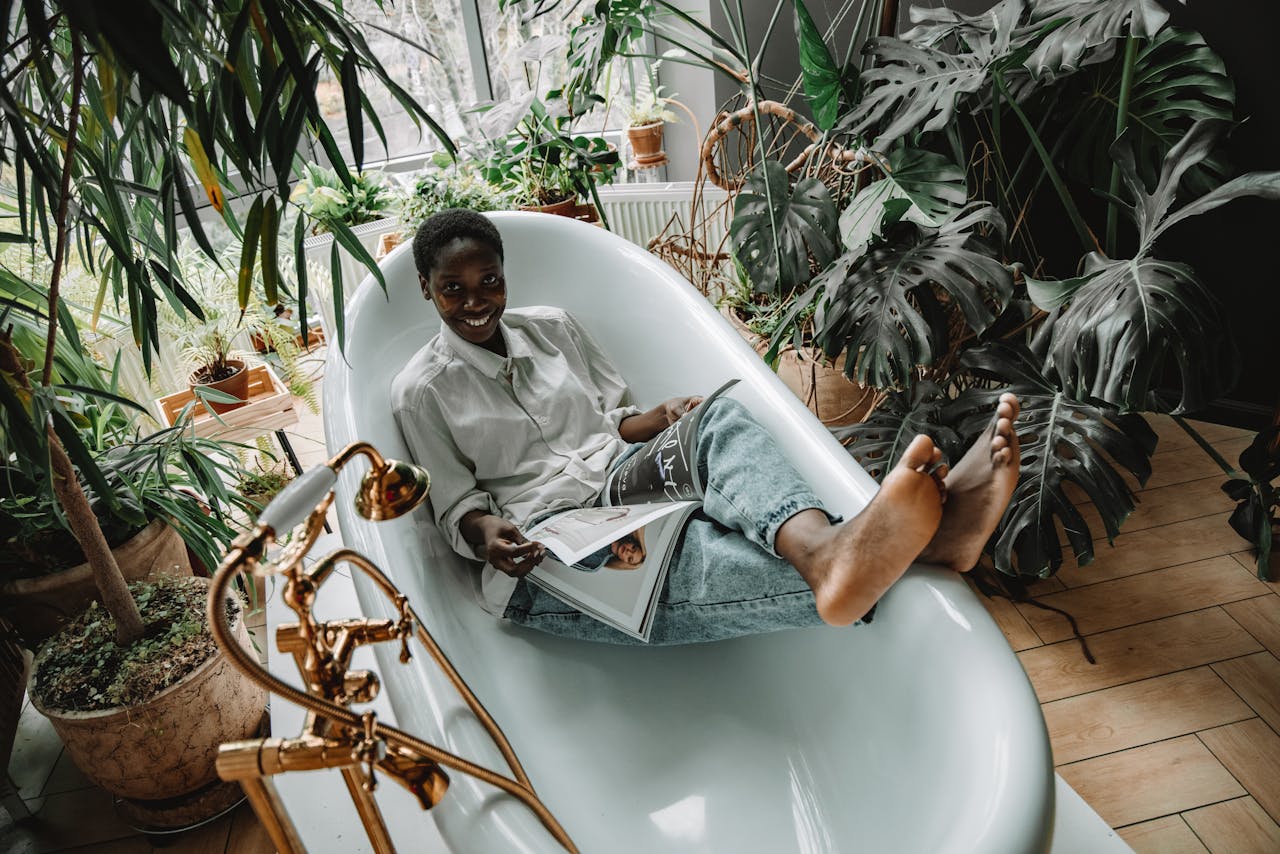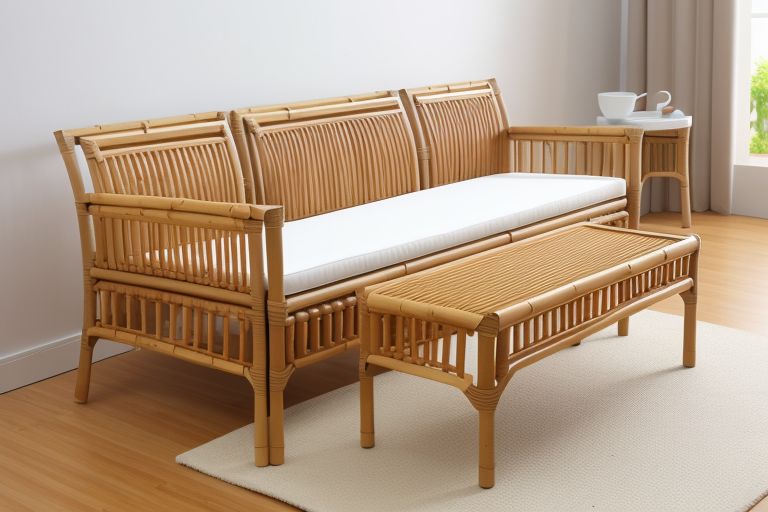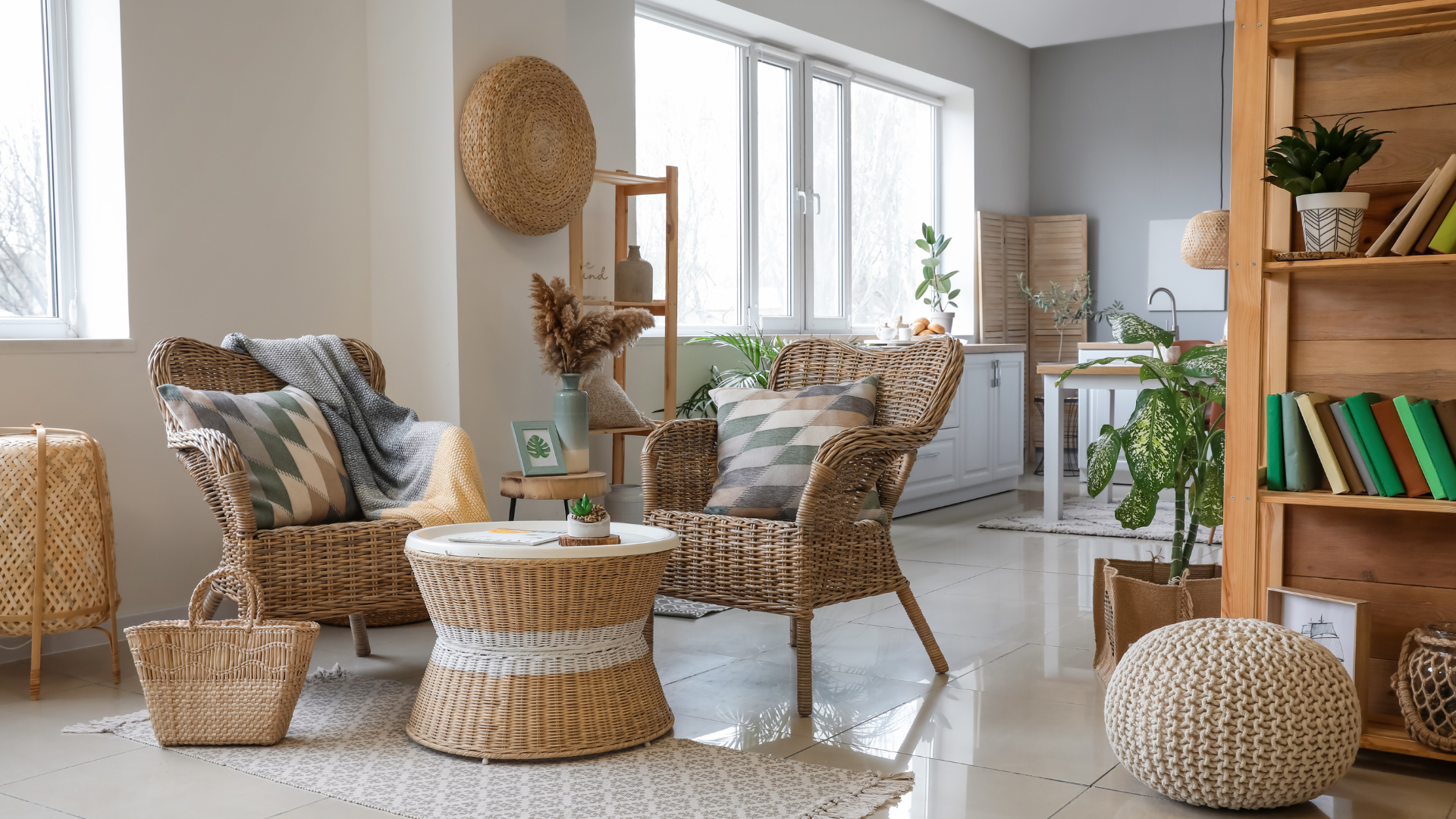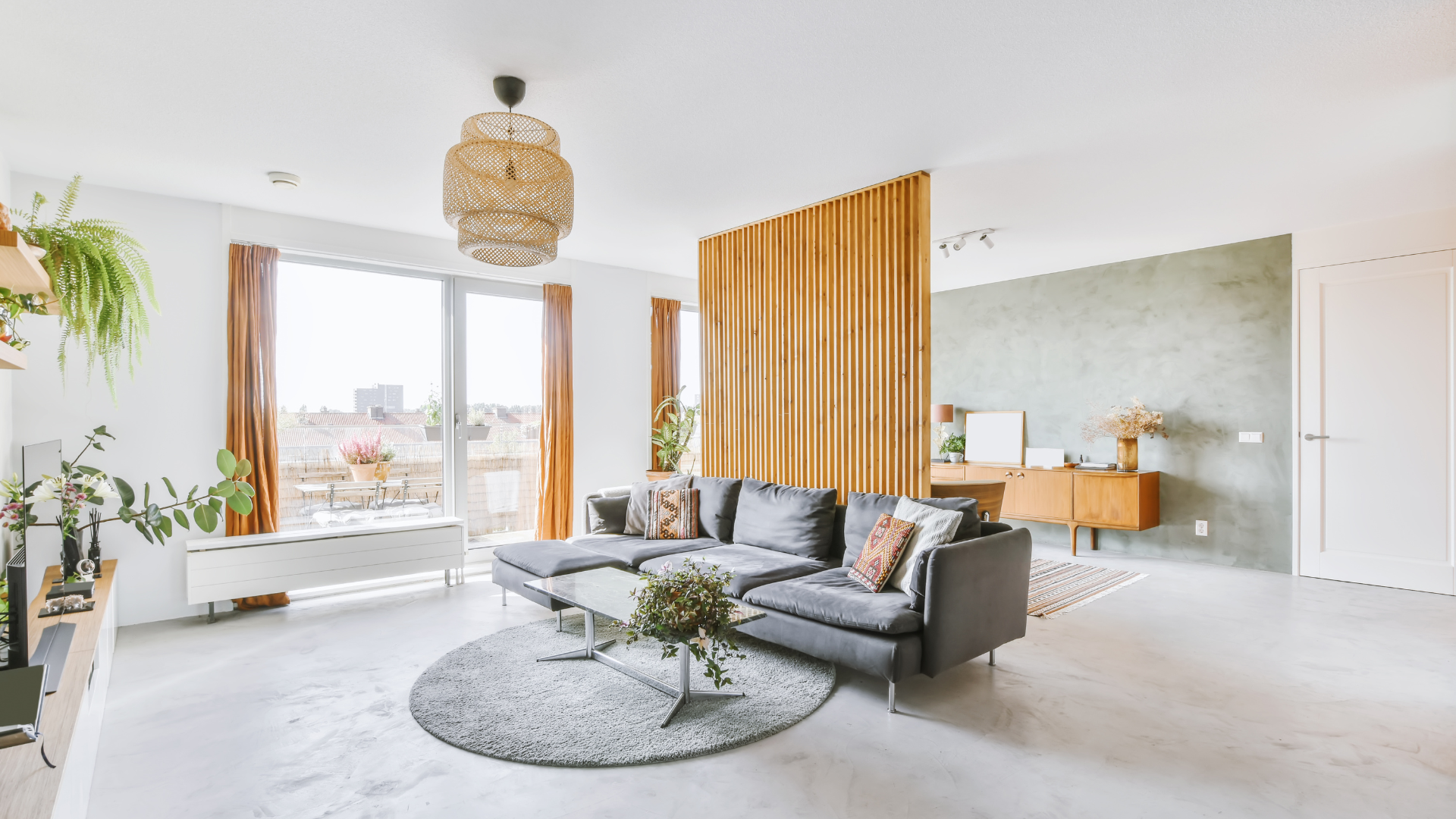Biophilic design, which integrates natural elements into built environments, continues to gain momentum as we move into 2025. This design philosophy not only enhances aesthetic appeal but also promotes well-being, sustainability, and a deeper connection with nature. Here are five biophilic design trends to watch for this year.

1. Living Walls and Vertical Gardens
Overview
Living walls and vertical gardens are becoming increasingly popular in both residential and commercial spaces. These installations involve growing plants on vertical surfaces, creating lush, green walls that bring nature indoors.
Benefits
- Improved Air Quality: Plants naturally filter pollutants from the air, improving indoor air quality.
- Aesthetic Appeal: Living walls add a unique and visually stunning element to any space.
- Thermal Regulation: Plants can help regulate indoor temperatures by providing natural insulation.
Implementation Tips
- Choose the Right Plants: Select plants that thrive in indoor environments and require minimal maintenance.
- Automated Irrigation Systems: Install automated watering systems to ensure plants receive consistent hydration.
- Lighting: Ensure adequate lighting, either natural or artificial, to support plant growth.
Table: Popular Plants for Living Walls
| Plant Name | Light Requirements | Watering Needs | Maintenance Level |
|---|---|---|---|
| Spider Plant | Low to Medium | Moderate | Low |
| English Ivy | Low to Medium | Moderate | Low |
| Pothos | Low to Medium | Moderate | Low |
| Ferns | Medium to High | High | Medium |
| Succulents | High | Low | Low |

2. Natural Light Integration
Overview
Maximizing natural light is a key aspect of biophilic design. Large windows, skylights, and open floor plans are used to bring in as much natural light as possible, creating bright and inviting spaces.
Benefits
- Enhanced Mood: Natural light has been shown to improve mood and reduce stress.
- Energy Efficiency: Utilizing natural light reduces the need for artificial lighting, lowering energy consumption.
- Connection to Nature: Natural light helps create a seamless connection between indoor and outdoor environments.
Implementation Tips
- Window Placement: Strategically place windows to capture the maximum amount of natural light.
- Reflective Surfaces: Use mirrors and light-colored surfaces to reflect and amplify natural light.
- Skylights: Install skylights in areas where traditional windows are not feasible.
List: Ways to Maximize Natural Light
- Use sheer curtains or blinds to diffuse light without blocking it.
- Opt for open floor plans to allow light to flow freely between spaces.
- Incorporate glass doors and partitions to maintain light flow while creating separate areas.

3. Indoor Water Features
Overview
Indoor water features, such as fountains, waterfalls, and aquariums, are becoming a staple in biophilic design. These elements introduce the soothing sounds and sights of water into indoor spaces.
Benefits
- Stress Reduction: The sound of flowing water has a calming effect, reducing stress and promoting relaxation.
- Aesthetic Appeal: Water features add a dynamic and visually appealing element to interiors.
- Humidity Control: Water features can help maintain optimal humidity levels, improving indoor air quality.
Implementation Tips
- Choose the Right Feature: Select a water feature that fits the scale and style of your space.
- Maintenance: Regularly clean and maintain water features to prevent algae growth and ensure proper functioning.
- Placement: Position water features in areas where they can be easily seen and heard, such as entryways or living rooms.
Table: Types of Indoor Water Features
| Water Feature Type | Description | Ideal Location | Maintenance Level |
|---|---|---|---|
| Wall Fountain | Mounted on walls, water flows down a vertical surface | Entryways, living rooms | Medium |
| Tabletop Fountain | Small, portable fountains for tables or desks | Offices, bedrooms | Low |
| Floor Fountain | Freestanding fountains placed on the floor | Living rooms, lobbies | High |
| Aquarium | Glass tanks with aquatic life | Living rooms, offices | High |

4. Use of Natural Materials
Overview
Incorporating natural materials such as wood, stone, and bamboo into interior design is a hallmark of biophilic design. These materials bring the textures and colors of nature indoors, creating a warm and inviting atmosphere.
Benefits
- Aesthetic Appeal: Natural materials add a timeless and organic beauty to interiors.
- Sustainability: Many natural materials are sustainable and environmentally friendly.
- Durability: Natural materials are often more durable and long-lasting than synthetic alternatives.
Implementation Tips
- Wood: Use reclaimed or sustainably sourced wood for flooring, furniture, and accents.
- Stone: Incorporate stone in countertops, backsplashes, and decorative elements.
- Bamboo: Utilize bamboo for flooring, furniture, and accessories due to its rapid growth and sustainability.
List: Popular Natural Materials in Biophilic Design
- Reclaimed Wood
- Natural Stone (e.g., granite, marble)
- Bamboo
- Cork
- Rattan

5. Indoor Gardens and Green Spaces
Overview
Creating indoor gardens and green spaces is a growing trend in biophilic design. These spaces can range from small potted plants to large indoor gardens and greenhouses.
Benefits
- Improved Air Quality: Plants naturally filter pollutants from the air, improving indoor air quality.
- Enhanced Well-Being: Being surrounded by greenery has been shown to reduce stress and improve mental health.
- Aesthetic Appeal: Indoor gardens add a lush and vibrant element to interiors.
Implementation Tips
- Container Gardens: Use pots and planters to create small, manageable gardens indoors.
- Greenhouses: Install indoor greenhouses for a dedicated space to grow a variety of plants.
- Vertical Gardens: Utilize vertical space with hanging planters and wall-mounted gardens.
Table: Types of Indoor Gardens
| Garden Type | Description | Ideal Location | Maintenance Level |
|---|---|---|---|
| Container Garden | Plants grown in pots or planters | Any indoor space | Low to Medium |
| Vertical Garden | Plants grown on vertical surfaces | Walls, balconies | Medium |
| Indoor Greenhouse | Enclosed space for growing a variety of plants | Sunrooms, large rooms | High |
| Herb Garden | Small garden for growing herbs | Kitchens, windowsills | Low |
Conclusion
Biophilic design is set to continue its rise in popularity in 2025, driven by a growing awareness of the benefits of integrating nature into our living spaces. From living walls and natural light integration to indoor water features and the use of natural materials, these trends not only enhance the aesthetic appeal of interiors but also promote well-being and sustainability. By embracing these biophilic design trends, we can create spaces that are not only beautiful but also nurturing and harmonious, fostering a deeper connection with the natural world.
As we move forward, it is essential to consider how these trends can be adapted to fit our unique spaces and lifestyles. Whether you are planning a major renovation or simply looking to refresh your home, incorporating elements of biophilic design can transform your environment into a sanctuary of tranquility and natural beauty. Embrace the power of nature in your home and experience the profound impact it can have on your well-being and quality of life.
FAQ
1. What is biophilic design?
Biophilic design is an approach to architecture and interior design that seeks to connect building occupants more closely to nature. It incorporates natural elements such as plants, water, natural light, and natural materials into the built environment to enhance well-being and productivity.
2. How can I incorporate biophilic design into my home?
You can incorporate biophilic design into your home by adding plants, maximizing natural light, using natural materials like wood and stone, and incorporating water features. Even small changes, like adding potted plants or using natural textures, can make a significant difference.
3. What are the benefits of biophilic design?
The benefits of biophilic design include improved mental and physical well-being, enhanced mood, increased productivity, better air quality, and a stronger connection to nature. It can also contribute to sustainability by using natural and eco-friendly materials.
4. Are there any maintenance challenges with biophilic design?
Yes, biophilic design elements like living walls, indoor gardens, and water features require regular maintenance to keep them healthy and functioning properly. Automated systems for watering and lighting can help reduce the maintenance burden.
5. Can biophilic design be applied to small spaces?
Absolutely! Biophilic design can be adapted to fit any space, regardless of size. In small spaces, consider using vertical gardens, small potted plants, and maximizing natural light through strategic window placement and reflective surfaces.



